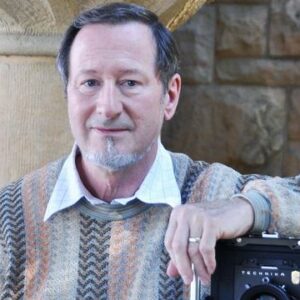Douglas D. Osheroff is an American physicist who, along with David Lee and Robert C. Richardson, shared the Nobel Prize in Physics in 1996. The prize was given to the trio for discovering superfluidity in the isotope helium-3. Douglas began his career in low-temperature physics, where he and his colleagues investigated the behavior of 3He at temperatures as low as a few thousandths of a degree below absolute zero using a Pomeranchuk cell. Their research eventually led to the work that won them the Nobel Prize. He grew up in a medical family and had an early interest in science, although having no desire to pursue a career in medicine. His parents sparked his interest in science by purchasing him a variety of scientific toys and gadgets. As he grew older, he enrolled in the California Institute of Technology (Caltech), where he was coached by Nobel Laureate Richard Feynman. For his doctorate, he went to Cornell University in Ithaca, where he got his PhD. He became heavily involved in low-temperature physics research here, and he collaborated with Lee and Richardson on the finding of superfluidity in the isotope helium-3. He has also served on the Space Shuttle Columbia investigative panel in addition to his academic responsibilities.
Childhood and Adolescence
Douglas Dean Osheroff was born in Aberdeen, Washington, on August 1, 1945, to a mixed-race family. His father was the son of Russian Jewish immigrants, while his mother was the daughter of a Lutheran preacher from what is now Slovakia. He is one of four siblings.
Because his father was a doctor and his mother was a nurse, he grew up in an intellectually stimulating environment. While the little youngster showed no interest in medicine, he did exhibit a strong interest in science.
He had a passion for conducting scientific experiments since he was a child, and his parents fully backed him in his endeavors. They lavished him with scientific toys and gadgets, fueling his excitement. He was an excellent student who excelled in physics and mathematics but struggled in languages.
He received his bachelor’s degree in 1967 from the California Institute of Technology (Caltech). His college years were thrilling, as he was able to attend Richard Feynman’s lectures and conduct undergraduate research for Gerry Neugebauer.
A Career of Douglas D. Osheroff
As a graduate student, Douglas Osheroff relocated to Cornell University’s Laboratory of Atomic and Solid State Physics. He worked on low-temperature physics research with David Lee and Robert C. Richardson there.
The researchers investigated the behavior of 3He at temperatures as low as a few thousandths of a degree below absolute zero using a Pomeranchuk cell. The researchers subsequently concluded that the 3He had undergone a phase transition to a superfluid state after discovering unanticipated effects in their studies.
The finding of superfluidity in helium-3 was a watershed moment in low-temperature physics, allowing scientists to examine quantum mechanical phenomena in macroscopic systems that had previously only been studied indirectly.
In 1973, Osheroff got his PhD and went to work for Bell Labs in Murray Hill, New Jersey, where he continued his study in low-temperature 3He phenomena.
He performed many interesting investigations with his team as a member of the Department of Solid State and Low Temperature Research under the direction of C. C. Grimes, and measured many of the important characteristics of the superfluid phases, which helped identify the microscopic states involved.
He began to concentrate on solid 3He in the late 1970s. Around this time, he collaborated with Gerry Dolan on the discovery of antiferromagnet resonance in nuclear spin ordered solid 3He samples that they grown directly from the superfluid phase to the spin-ordered solid phase. He oversaw solid-state and low-temperature research at the labs from 1982 to 1987.
He became a professor in the Departments of Physics and Applied Physics at Stanford University in 1987, and he also served as chair of the department from 1993 to 1996. Investigations of transport properties in nuclear magnetically ordered solid 3He and studies of B phase nucleation in superfluid 3He are also part of his study.
He was appointed to the Columbia Accident Investigation Board (CAIB) by NASA in 2003 to look into the destruction of the Space Shuttle Columbia during STS-107’s atmospheric re-entry on February 1, 2003.
He also teaches a freshman course at Stanford called “Technical Aspects of Photography,” in which he exposes students to medium-format film photography. He has also taught the Stanford basic physics course on electricity and magnetism on multiple times.
Major Projects of Douglas D. Osheroff
Douglas Dean Osheroff is best known for discovering superfluidity in Helium-3 while a graduate student at Cornell University alongside his colleagues. He investigated the behavior of 3He at temperatures extremely close to absolute zero alongside David Lee and Robert C. Richardson using a Pomeranchuk cell.
Achievements & Awards
He has received numerous honors, including the Simon Memorial Prize (1976), the Oliver E. Buckley Prize (1981), and the MacArthur Prize Fellow (1981).
“For their discovery of superfluidity in helium-3,” Douglas D. Osheroff, David M. Lee, and Robert C. Richardson shared the Nobel Prize in Physics in 1996.
Personal History and Legacy
Since 1970, he has been married to Phyllis Liu-Osheroff, a biochemist.
Estimated Net Worth
Douglas has a net worth between $3 million and $5 million. Douglas made the most of his money from his Yeezy footwear. While he had overstated the size of his business throughout the years, the money he made from it was real–enough to make him one of the richest celebrities of all time. His primary source of income is as a successful scientist.


